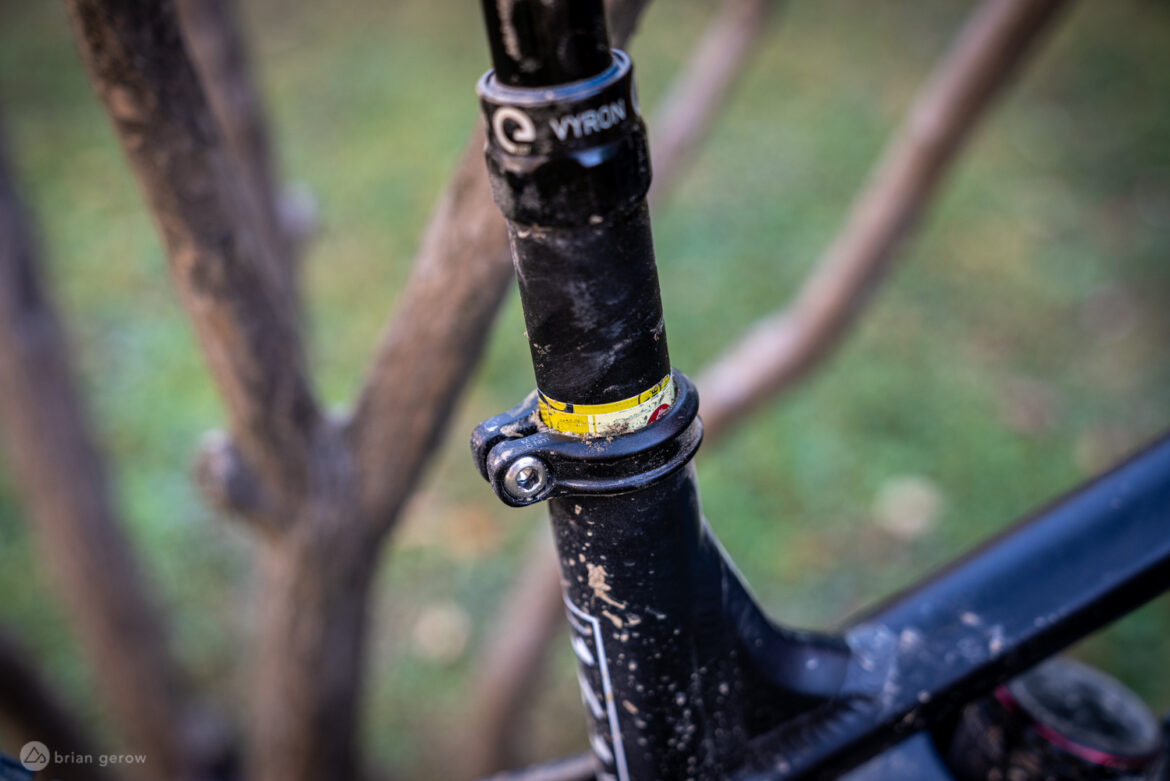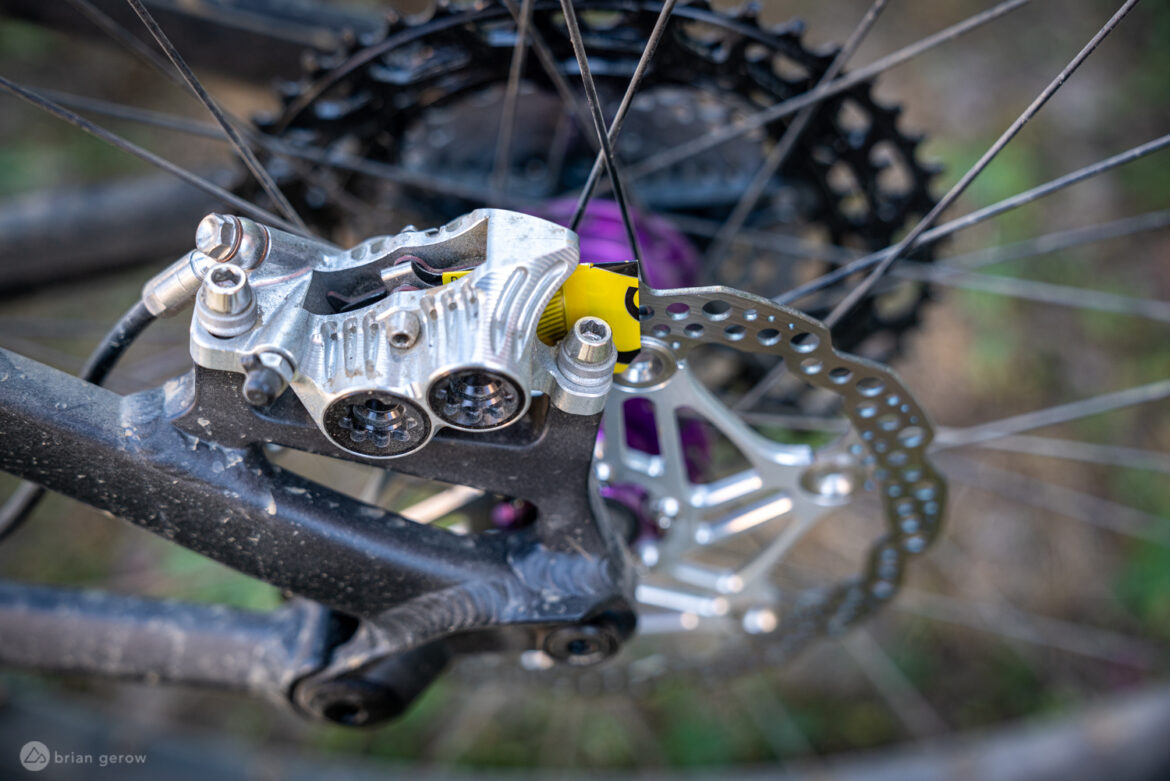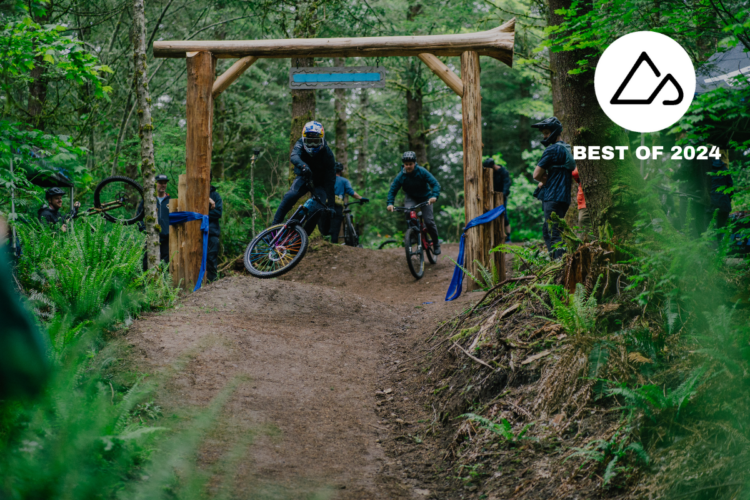
Any opinions expressed in this article belong to the author alone, and do not necessarily represent the opinions of Singletracks.com.
Using an aluminum can as a seat post shim just might be the original “hack” in the Dirt Bag Mechanic’s Diagnostic Manual. We wanted to share that quick fix along with a couple of others with newer riders who haven’t yet read that riveting repair novel.
Installing a seat post that’s one size too small for your frame can offer a few advantages. For starters, a 30.9mm diameter post will fit in a frame with a 31.6mm seat tube if you add a shim to take up the space. You can then rotate that post around to different bikes with either post diameter. The same isn’t true in reverse, as you can’t shrink the post diameter nor (reasonably) ream out the frame’s seat tube diameter. Secondly, it allows you to use a lighter weight post. For example, a OneUp 30.9mm dropper is roughly 20g lighter than a 31.6mm post. If you’re going for a lightweight build this will shave another tiny crumb from the cake.

If your frame and post differ more than one size it’s likely better to buy a proper shim, as the lack of precision in this method can cause problems. If the shim makes the post too tight it can become stuck in the frame, and if it’s too loose you will have to over tighten the post collar which can bend and damage the top of the frame’s seat tube.
The post shimming process

The idea here is wicked simple. You have a frame with an internal seat tube diameter that’s larger than the seat post that you own. You can buy a precisely sized shim to take up that space, or you can use a can. Maybe the bike shop is closed and you want to go ride the aforementioned bike without waiting for a shim, or maybe you just prefer the do-it-yourself route. Either way, here’s how we chopped it up it.
You will need a thin aluminum can. I prefer tonic cans because they allow me to use up the limes rolling around on my kitchen table.
- Pour or mix a drink.
- Throw on a thick pair of gloves and cut the top and bottom off of the can with a sharp pair of scissors.
- Then, slice the cylinder down one side to create a thin roll of aluminum.
- Slide the post into your frame without the shim and mark the point where it will be clamped in the frame for your desired saddle height.
- Wipe a thin layer of grease on the seat post and inside the frame.
- Wrap the shim around the seat post tightly and make sure that the edges are flat. You want the upper edge of the shim to sit right at the measurement mark you made so that the shim can be fully clamped between the post and the seat tube when you tighten it down. It’s important for the shim to remain as close to the top of the seat tube as possible when you tighten the post collar, as this is where the gap needs to be filled. If the shim sits below the seat post collar the post will eventually slip.
- You can use a screwdriver blade to align the shim at the top of the seat tube as you slide it into the frame.
- Finally, tighten the post clamp and hit the trail.
Brake caliper alignment “tool”
A shim is a shim, and a chunk of aluminum can also works well to align disc brake calipers. The process is even simpler than the seat post shim.
- Again, thick gloves are good.
- Cut and thoroughly clean piece of can that’s about twice the size of one of your brake pads.
- Loosen both of the caliper mounting bolts until you can wiggle the caliper body at both ends.
- Bend the can slice tightly over your rotor and gently rotate it until the slice sits between your rotor and brake pads.
- Squeeze the brake lever tightly with one hand while you tighten the caliper bolts wit the other hand.
- Boom. Your caliper should be properly aligned. If your pads continue to rub there may be an issue with the pistons not moving equally, or the caliper mount may be uneven. We will dig into those issues with a more in-depth disc brake dive in the near future.
Guitar pick

Okay, this one isn’t so important for all mountain bikers but for dirtbags who play stringed instruments, it’s a fun way to find some unique sounds. Just bend the chunk of alloy into your favorite pick shape, making sure it won’t cut you while playing and strum away. When not plucking the bass with my fingers I occasionally like to play with different pick materials like this. It can also bring an odd vibrance back to old dead strings while you’re waiting to buy a fresh set.
What other uses have you found for reusing aluminum cans or other household items? Please share them in the comments below.
















2 Comments
Sep 3, 2020
For other beverage related posts you might consider bike-related objects that work as bottle openers. If you haven't tried it already, the SPD pedal works better than most actual bottle openers.
Sep 5, 2020